I'm trying to deploy the spark models(sparkxgbregressor, rfregressor) in databricks. Is model inferencing available for ONLY scikit learn models? If yes, is there any other way to deploy spark models in databricks?
As per the ask, adding code for reference:(This code runs fine and logs the last run model instead of best, but has the following warning:
WARNING mlflow.pyspark.ml: Model PipelineModel_f*******6 will not be autologged because it is not allowlisted or or because one or more of its nested models are not allowlisted. Call mlflow.spark.log_model() to explicitly log the model, or specify a custom allowlist via the spark.mlflow.pysparkml.autolog.logModelAllowlistFile Spark conf (see mlflow.pyspark.ml.autolog docs for more info).
#-------------------------------------------------------XGBOost-------------------------------------------------------------------------
#train_df=train_df.limit(188123)
from pyspark.ml.feature import StringIndexer, VectorAssembler
from pyspark.ml import Pipeline
from xgboost.spark import SparkXGBRegressor
from pyspark.ml.evaluation import RegressionEvaluator
import numpy as np
from mlflow.models.signature import infer_signature
from hyperopt import hp
#vec_assembler = VectorAssembler(inputCols=train_df.columns[1:], outputCol="features")
xgb = SparkXGBRegressor(num_workers=1, label_col="price", missing=0.0)
pipeline = Pipeline(stages=[ordinal_encoder, vec_assembler, xgb])
regression_evaluator = RegressionEvaluator(predictionCol="prediction", labelCol="price")
def objective_function(params):
# set the hyperparameters that we want to tune
max_depth = params["max_depth"]
n_estimators = params["n_estimators"]
with mlflow.start_run():
estimator = pipeline.copy({xgb.max_depth: max_depth, xgb.n_estimators: n_estimators})
model = estimator.fit(train_df)
preds = model.transform(test_df)
rmse = regression_evaluator.evaluate(preds)
mlflow.log_metric("rmse", rmse)
return rmse
search_space = {
"max_depth" : hp.choice('max_depth', np.arange(5, 15, dtype=int)),
"n_estimators": hp.choice('n_estimators', np.arange(50, 80, dtype=int))
}
from hyperopt import fmin, tpe, Trials
import numpy as np
import mlflow
import mlflow.spark
import mlflow.sklearn
mlflow.pyspark.ml.autolog(log_models=True)
num_evals = 1
trials = Trials()
best_hyperparam = fmin(fn=objective_function,
space=search_space,
algo=tpe.suggest,
max_evals=num_evals,
trials=trials,
rstate=np.random.default_rng(42))
# Retrain model on train & validation dataset and evaluate on test dataset
with mlflow.start_run():
best_max_depth = best_hyperparam["max_depth"]
best_n_estimators = best_hyperparam["n_estimators"]
estimator = pipeline.copy({xgb.max_depth: best_max_depth, xgb.n_estimators: best_n_estimators})
combined_df = train_df.union(test_df) # Combine train & validation together
pipeline_model = estimator.fit(combined_df)
pred_df = pipeline_model.transform(test_df)
#signature = infer_signature(train_df, pred_df)
rmse = regression_evaluator.evaluate(pred_df)
# Log param and metrics for the final model
mlflow.log_param("maxdepth", best_max_depth)
mlflow.log_param("n_estimators", best_n_estimators)
mlflow.log_metric("rmse", rmse)
mlflow.spark.log_model(pipeline_model, "model",input_example=test_df.select(old_cols_list).limit(1).toPandas())




